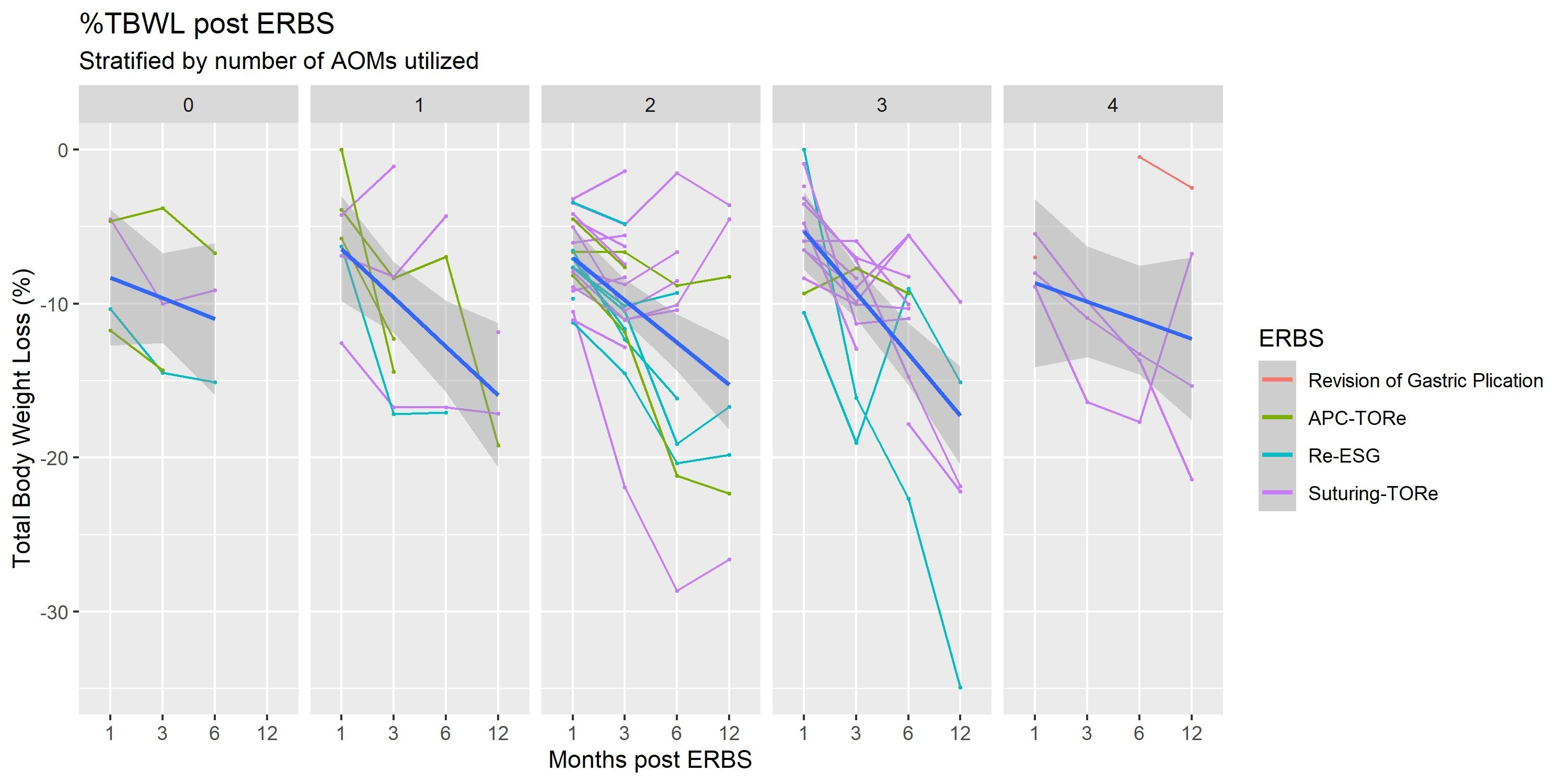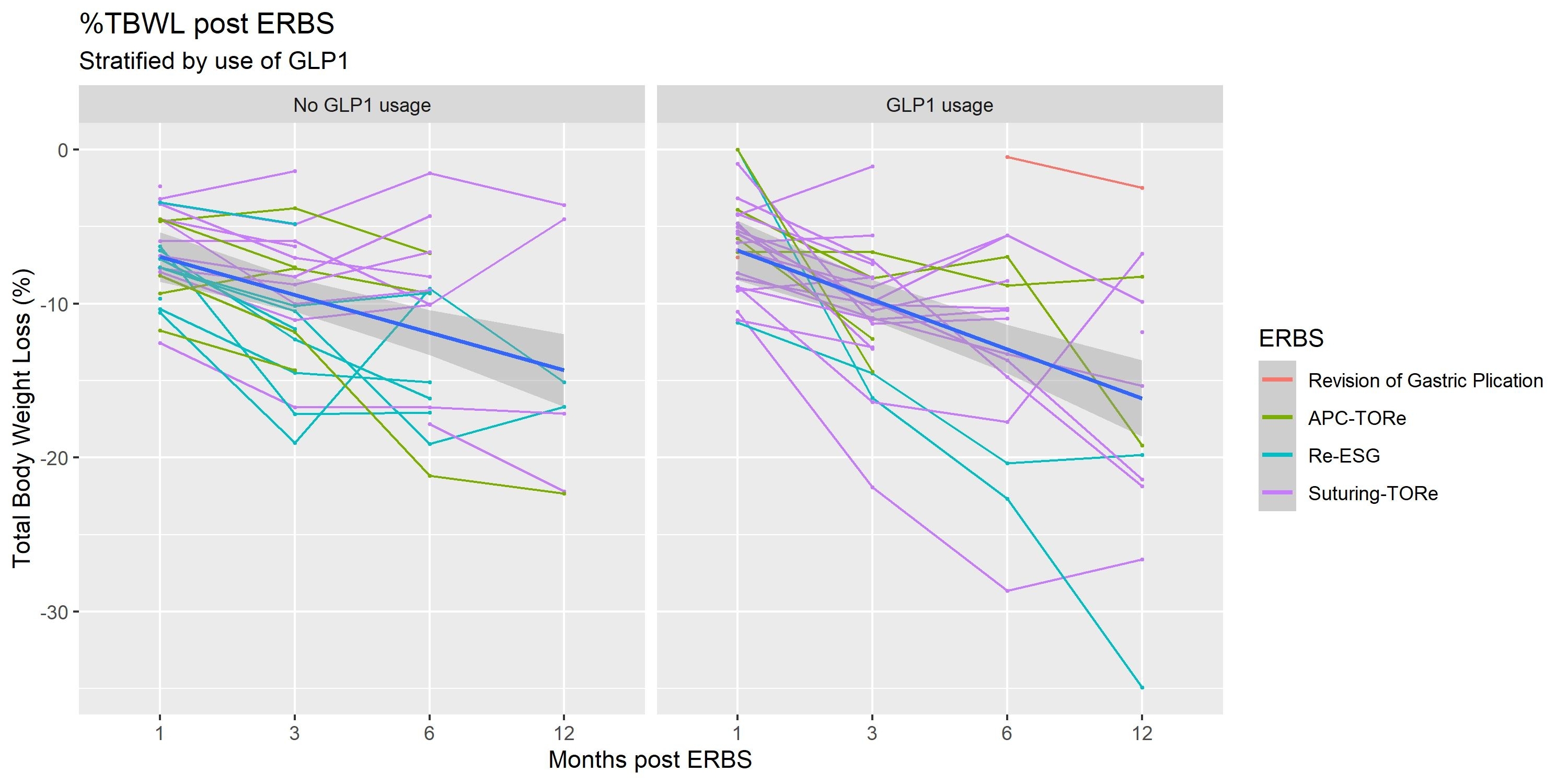Back to 2024 Abstracts
WHAT ARE THE OUTCOMES OF COMBINING ENDOSCOPIC REVISION OF PRIOR BARIATRIC SURGERY WITH NEWER ANTI-OBESITY MEDICATIONS?
Jeffrey Shu
*, Stephen A. Firkins, Roma Patel, Heesoo Yoo, Bailey Flora, Rehan Haidry, Roberto Simons-Linares
Gastroenterology, Cleveland Clinic, Cleveland, OH
Background:
Bariatric surgery is the most effective treatment for obesity, however patients can experience weight regain after bariatric surgery. Both anti-obesity medications (AOM) and endoscopic revision of prior bariatric surgery (ERBS) are effective and safe to treat weight regain post-bariatric surgery, but there is limited data on combining ERBS with newer AOM (such as GLP-1 agonists). Our study aims to compare outcomes using combination AOMs and ERBS to treat weight regain post bariatric surgery.
Methods:
A single-center, retrospective study of patients with prior ERBS (transoral outlet reduction [TORe], revisional endoscopic sleeve gastroplasty of prior sleeve gastrectomy [Re-ESG]) was performed between 09/2021-09/2023. The primary and secondary outcomes of percent total body weight loss (%TBWL) at 6 and 12 months post-ERBS were compared between patients receiving different AOM regimens. Continuous variables were depicted as mean (±SD) and two-sided t-tests and one-way analysis of variance (ANOVA) were performed.
Results:
A total of 50 patients underwent ERBS, these included 29 suturing TORe, 11 Re-ESG, 9 Argon Plasma Coagulation (APC)-TORe, and 1 revision of laparoscopic gastric plication. Average baseline BMI was 39.84 (±6.63) kg/m
2, with no significant differences in age, sex, baseline BMI, or comorbidities between the procedure types. Patients utilized an average of 2.2 (±1.02) AOMs post-ERBS: orlistat (2%), phentermine (15%), naltrexone-bupropion (2%), liraglutide (10%), tirzepatide (20%), semaglutide (32%), dulaglutide (4%), metformin (30%), topiramate (32%), and bupropion (20%). Average %TBWL at 1, 3, 6, and 12 month follow up were 6.44% (±2.96%), 10.27% (±4.34%), 11.95% (±6.27%), and 15.49% (±8.40%), respectively. 38% of patients achieved a nadir weight following ERBS surpassing their nadir weight following primary bariatric surgery. No significant difference in %TBWL and the number of AOMs used was found at 6 (p = 0.9136) or 12 months (p = 0.6007). No significant difference in %TBWL was found for ERBS +concomitant GLP1-agonists [TBWL 12.41%] vs ERBS without GLP1-agonist [TBWL 11.53%] at 6 months (p = 0.6917) or 12 months [TBWL 16.02% vs 14.50%] (p = 0.6975).
Conclusion:
Our study suggest that endoscopic revision/ERBS ± AOMs in combination is successful for treating obesity in patients with weight regain after bariatric surgery; however the number and type of AOMs are not significant predictors of post-ERBS %TBWL, and should be prescribed based on clinical judgment. Larger studies with greater numbers of patients and longer follow up are needed to assess the effect of these medications in combination with ERBS long-term.


Back to 2024 Abstracts

